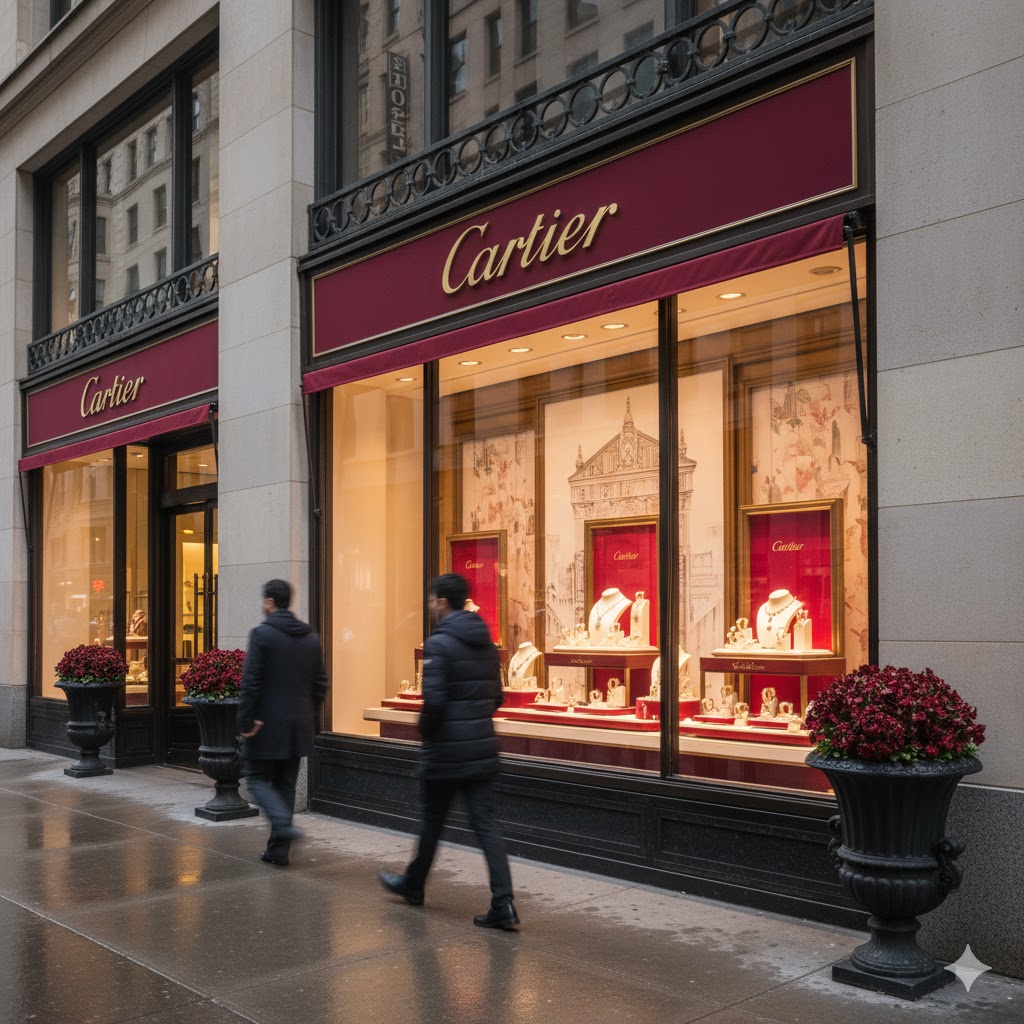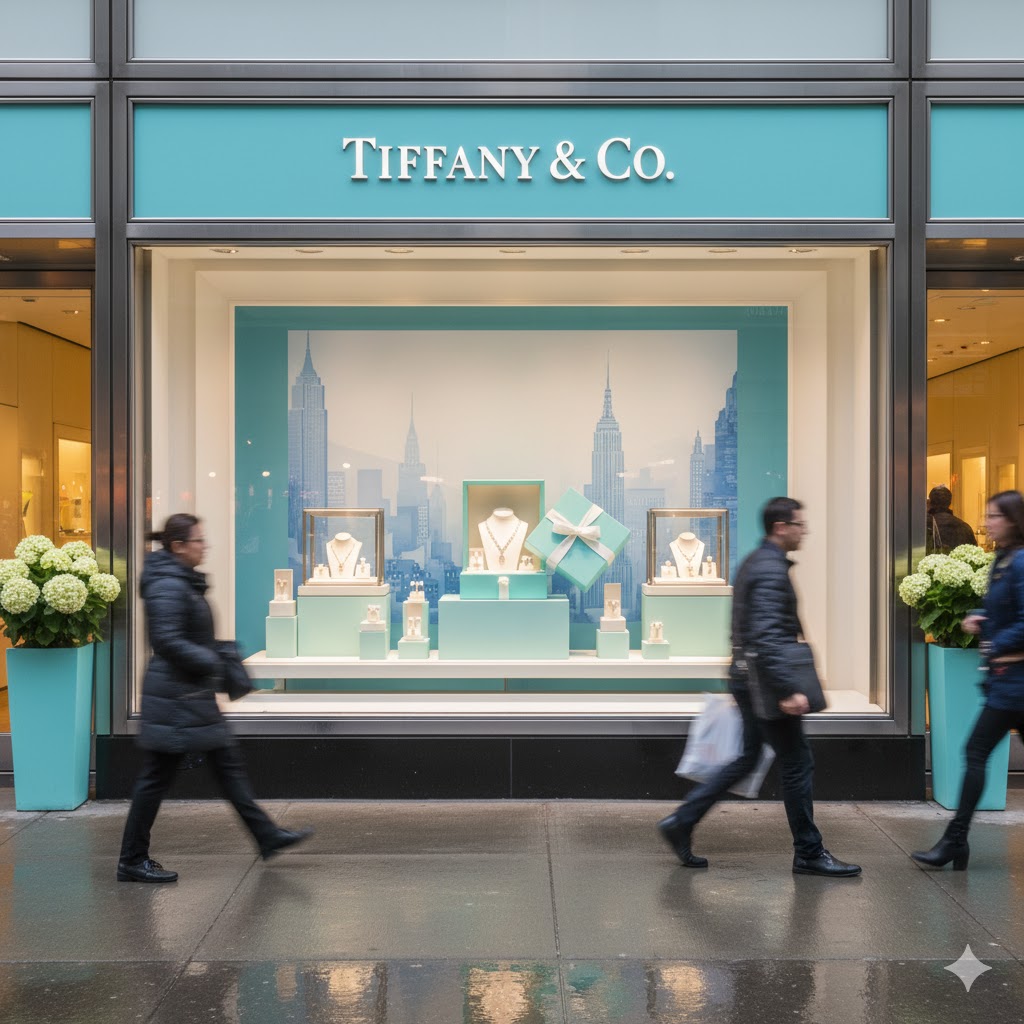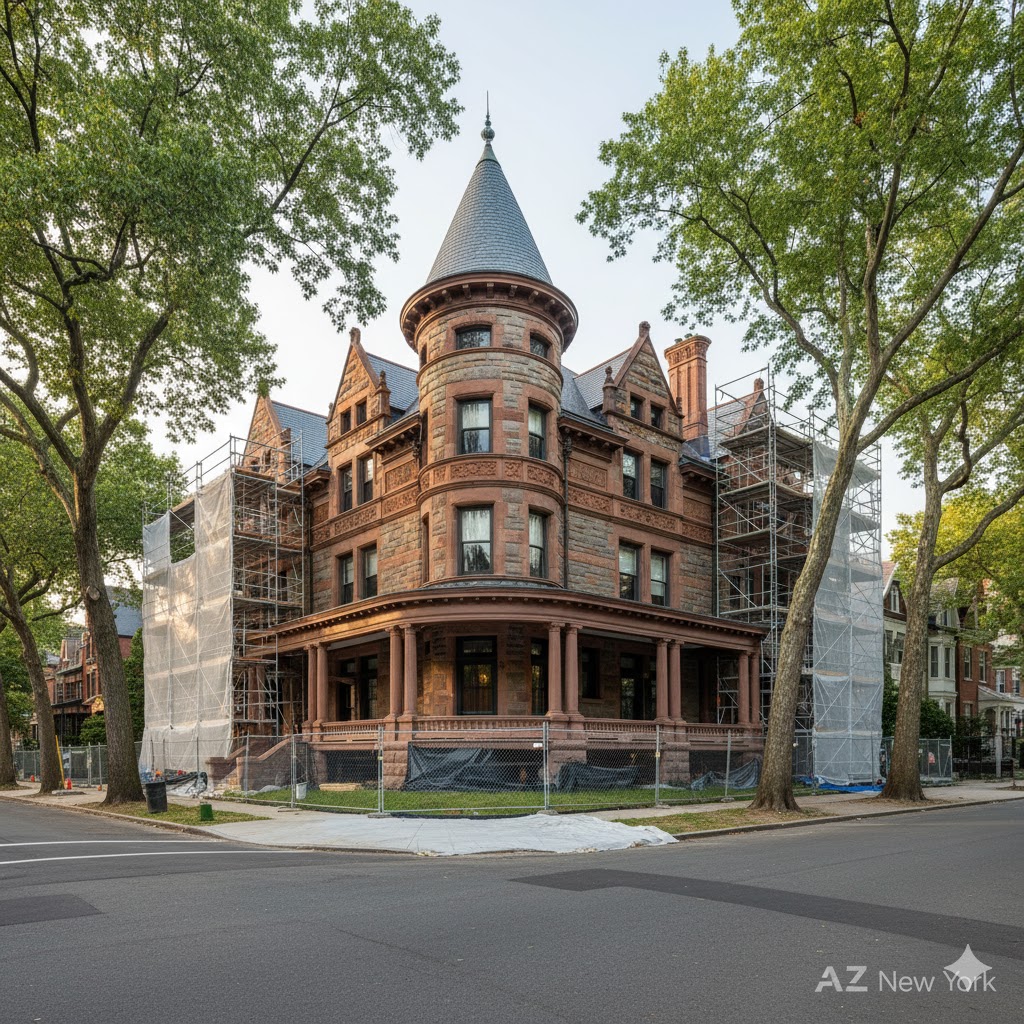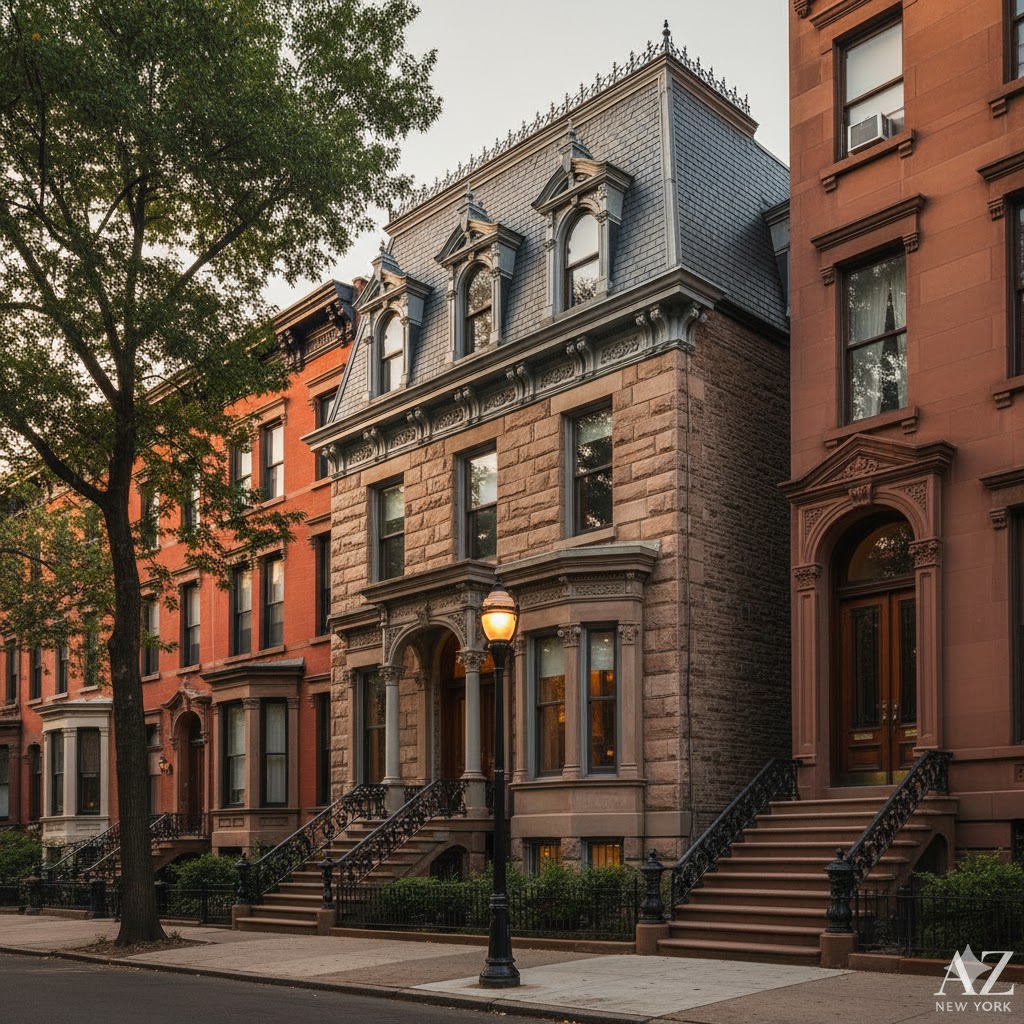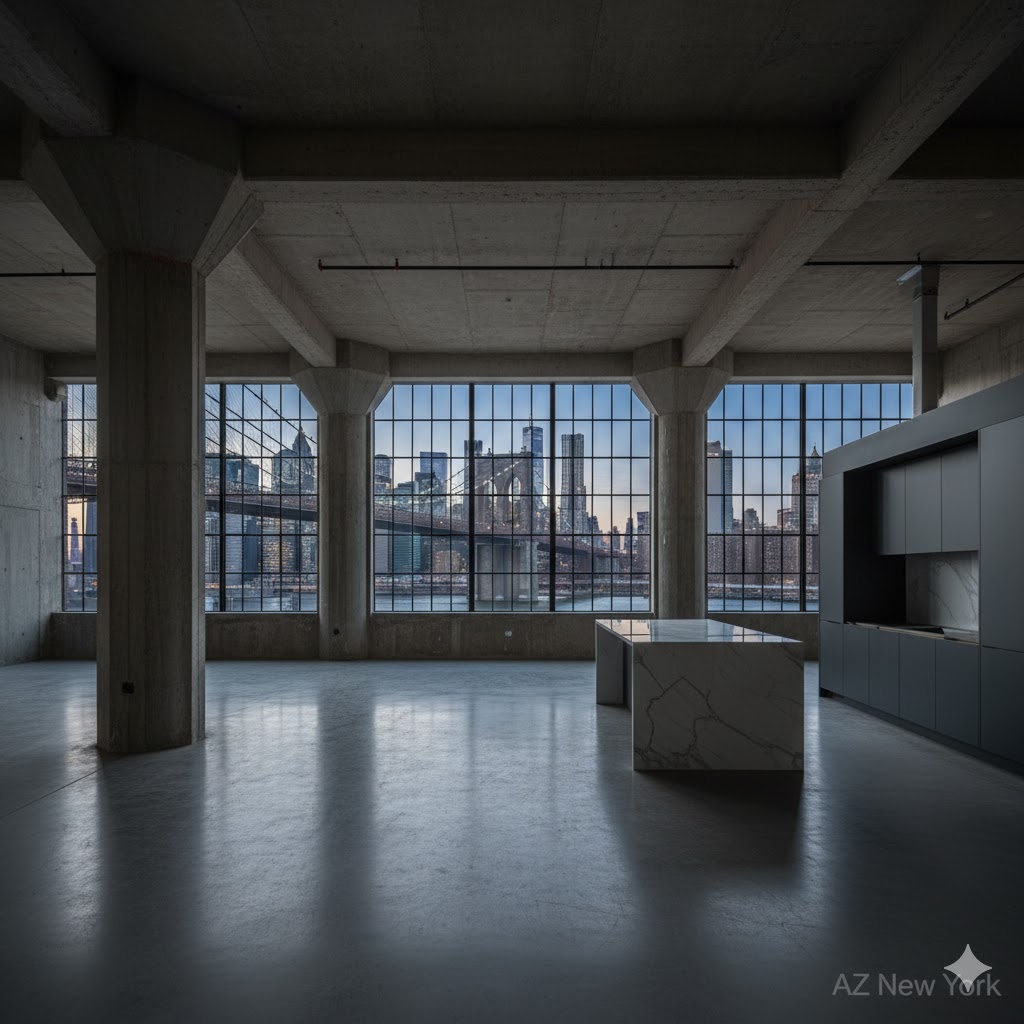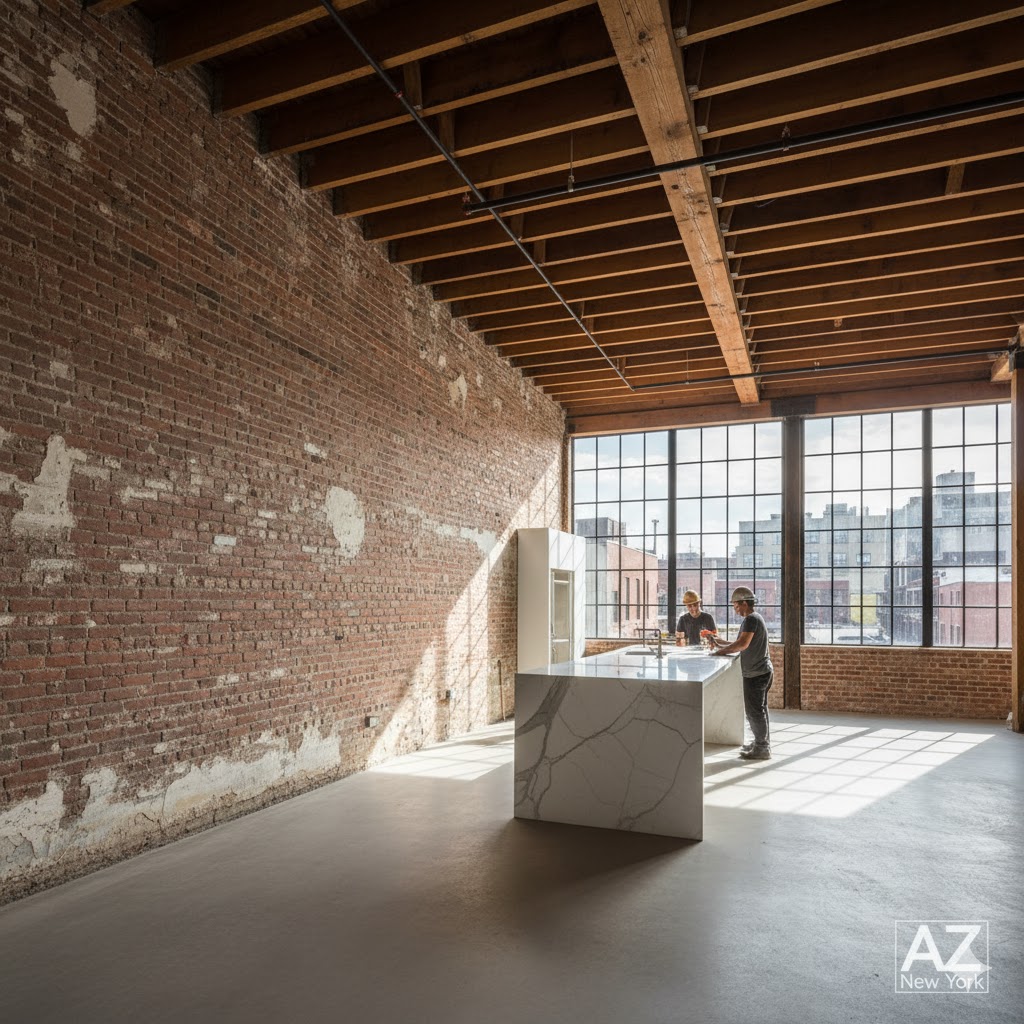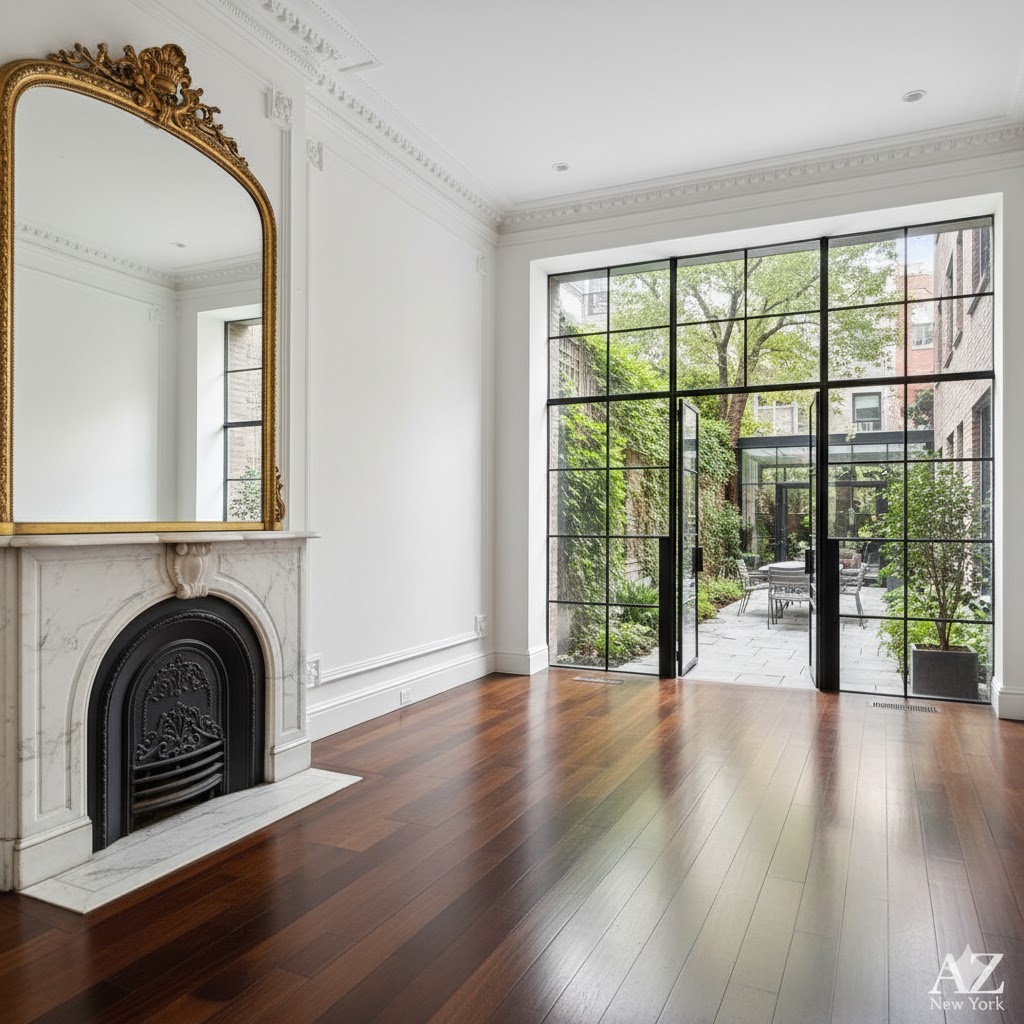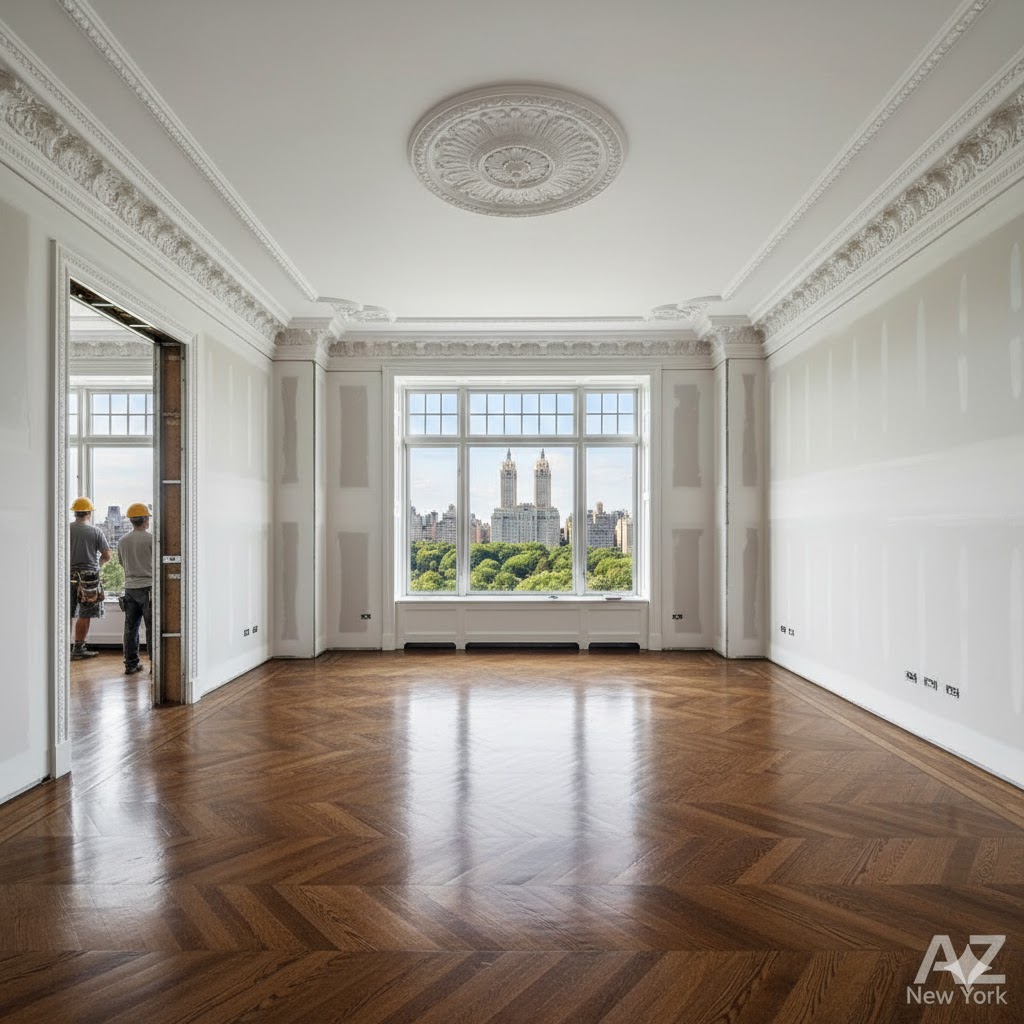What is the true influence of the New York Stock Exchange (NYSE) on the daily lives of ordinary people?

What is the true influence of the New York Stock Exchange (NYSE) on the daily lives of ordinary people?
For most people, the New York Stock Exchange is an abstraction. It’s a blur of frantic activity on a TV screen, a symbol of a distant and complex financial world.
But the truth is, the institution at 11 Wall Street is deeply woven into the fabric of our daily lives.
The rise and fall of the markets has a direct and tangible impact on your retirement savings, your job security, and even the price of your morning coffee. This is not just a stage for high finance; it’s a critical mechanism that shapes the real economy.
In this third article of our 100-question exploration, the team at AZ New York will bridge the gap between Wall Street and Main Street, showing you exactly how the NYSE’s activities translate into real-world consequences for you.
The Direct Connection: Your Savings and Your Job
The most immediate and powerful influence of the NYSE on your life is through your finances and employment. These are not theoretical concepts; they are measurable impacts on your personal wealth and career stability.
Your Retirement Savings and the “Wealth Effect”
If you have a 401(k), an IRA, or any form of pension plan, you are an investor in the stock market. These retirement funds hold vast portfolios of stocks and bonds listed on exchanges like the NYSE.
When the market performs well, the value of your retirement account grows. This creates what economists call the “wealth effect.” People feel more financially secure and are more confident about spending money, which boosts the broader economy.
Conversely, when the market declines, so does your nest egg, leading to consumer anxiety and reduced spending.
Company Health and Your Job Security
The stock price of a publicly traded company is a vital sign of its health and future prospects. A rising stock price makes it easier for a company to raise capital by issuing more shares.
This capital is the lifeblood for expansion, research, and development—all of which lead to hiring and job creation. It gives the company a currency to acquire other businesses and grow.
A plummeting stock price, however, can signal trouble. It makes raising money difficult and can pressure management into cost-cutting measures, which often include layoffs and hiring freezes.
The Indirect Ripple Effect: Costs, Loans, and Innovation
Beyond your personal finances, the NYSE’s performance sends ripples throughout the entire economy, affecting the cost of goods, your ability to get a loan, and the pace of technological innovation.
Interest Rates and Your Access to Credit
The stock market is a key indicator of economic health that the Federal Reserve monitors closely. A volatile or crashing market can signal an economic downturn, prompting the Fed to lower interest rates to stimulate growth.
These rates directly influence the mortgage on your home, the loan on your car, and the interest on your credit card debt. A healthy stock market generally corresponds with a stable and predictable credit environment.
The Price of Goods and Corporate Investment
Confident companies invest. When the market is strong, businesses are more likely to invest in new factories, upgrade technology, and streamline their supply chains.
These investments increase efficiency and productivity, which can help keep consumer prices stable or even lower them over the long term. A weak market discourages this kind of capital expenditure, which can lead to stagnation.
Pro Tip: Check the “expense ratio” on the mutual funds or ETFs in your retirement account. This small percentage is what the fund company charges to manage your money. A lower expense ratio (under 0.20%) means more of your money stays invested and working for you, directly impacting your share of the market’s gains.
A Piece of History: The tradition of ringing the opening and closing bells was not always a spectacle. It began in the late 1800s with a large Chinese gong. The brass bell was introduced only after the NYSE moved to its current building in 1903. The first-ever guest to ring the opening bell, starting the modern tradition, was a 10-year-old television quiz show winner named Leonard Ross in 1956.
Frequently Asked Questions (FAQ)
Let’s clarify some common points of confusion about the NYSE’s real-world impact.
If I don’t own any stocks, does the NYSE still affect me?
Absolutely. As outlined above, the market’s performance directly influences the company you work for, its hiring or firing decisions, the interest rates you pay on loans, and the overall health of the economy that determines job availability and consumer prices.
What actually causes the stock market to rise or fall?
At its core, the market moves based on supply and demand, which is driven by investor sentiment about the future. Good news—like strong corporate earnings, low unemployment, or technological breakthroughs—makes investors optimistic and more willing to buy, driving prices up. Bad news or uncertainty creates fear, leading to selling that drives prices down.
How can an average person start investing?
Today, it’s easier than ever. You can open a brokerage account online and buy shares of individual companies or invest in Exchange-Traded Funds (ETFs) and mutual funds, which hold a diverse basket of stocks. This is a core topic we explore in our Personal Finance guides.
Keywords for Your Next Internet Searches on the Subject…
How NYSE affects economy, stock market impact on daily life, wealth effect explained, stock market and job security, NYSE and interest rates, investing for beginners, 401k and stock market, main street vs wall street.
Tags
New York Stock Exchange, NYSE, Stock Market, Personal Finance, Investment, Global Economy, Wealth Effect, Job Security, Interest Rates, 401k, Retirement Planning, Wall Street, Financial District, Economic Indicators, Consumer spending, Corporate Finance, Capital Markets, Stock Trading, ETFs, Mutual Funds, FiDi, New York City, US Economy, Market Volatility, Investor Sentiment
Part 1: Business, Economy, and Power (1–20)
This section explores the core of what makes the Financial District tick: the deals, the institutions, and the immense power that flows through its veins.
- What does it really mean to “work on Wall Street” today?
- How does the “investment banking” culture of FiDi shape the global economy?
- What is the true influence of the New York Stock Exchange (NYSE) on the daily lives of ordinary people?
- How deep is the connection between the political power of Washington D.C. and the decisions made on Wall Street?
- Does the “Charging Bull” still symbolize prosperity, or has it become an icon of corporate greed?
- What are the best-kept secrets of the major investment banks headquartered in FiDi?
- How is the rise of fintech and cryptocurrencies challenging the traditional financial dominance of Wall Street?
- What is the true human cost behind the multi-billion dollar profits generated in the Financial District?
- If the walls of Goldman Sachs or J.P. Morgan’s offices could talk, what would they reveal about power?
- Is Wall Street’s “work hard, play hard” culture sustainable in the long run?
- What is the role of the Federal Reserve Bank of New York in the stability (or instability) of the world economy?
- How ethical are the practices that led to the rise of so many financial empires in FiDi?
- What is the impact of artificial intelligence on the high-frequency trading that occurs on Wall Street?
- Who are the real “wolves” of Wall Street today?
- How is the gentrification of the Financial District transforming the social and economic landscape of Lower Manhattan?
- What is the next major financial crisis that could emerge from Wall Street?
- What does the concentration of so much financial power in a single area say about social inequality in the U.S.?
- How does the annual bonus culture on Wall Street affect the mindset and decisions of traders?
- What is the true story behind the fortunes built and lost on Wall Street?
- If the Financial District were a country, what would its GDP and foreign policy be?
Part 2: Lifestyle, Behavior, and Wall Street Culture (21–40)
Beyond the numbers, there’s a unique culture. This section delves into the daily lives, habits, and social dynamics of the people who power the Financial District.
- What is the unwritten dress code for success in FiDi?
- What is the daily routine of a junior analyst at an investment bank on Wall Street?
- What role do happy hours play in the networking and deal-making culture of the Financial District?
- Is life in FiDi more like the show “Billions” or the movie “The Wolf of Wall Street”?
- What are the most coveted status symbols among Wall Street professionals?
- How does the pressure to perform affect the mental health of workers in the Financial District?
- What is the “secret language” and jargon used by Wall Street insiders?
- Is there a “Wall Street dream” analogous to the “American dream”?
- How do FiDi professionals balance their personal lives with the long working hours?
- What is the role of exclusive clubs and secret societies in Wall Street’s power hierarchy?
- How has Wall Street’s culture changed since the 2008 financial crisis?
- What do “Wall Street bros” do for fun on the weekends?
- What is the soundtrack to the life of a successful trader on Wall Street?
- How important are philanthropy and donations to the public image of Wall Street billionaires?
- What are the gender dynamics like in an environment as male-dominated as Wall Street?
- What is the diet of a high-performance professional in the Financial District?
- What do Wall Street veterans teach newcomers about surviving in this competitive environment?
- What is the impact of Wall Street culture on New York City’s nightlife and relationships?
- What happens when someone on Wall Street “breaks” and loses everything?
- What cultural legacy is the current generation of Wall Street professionals leaving for the future?
Part 3: Architecture, Real Estate, and Urbanism (41–55)
The very streets and buildings of the Financial District tell a story. Here, we examine the physical environment that houses the world’s most powerful economic engine.
- How does the architecture of the Financial District’s skyscrapers reflect the power and ambition of their occupants?
- What is the story behind the names of FiDi’s streets, like Wall Street, Broad Street, and Pearl Street?
- How did One World Trade Center and the 9/11 Memorial change the landscape and spirit of the Financial District?
- What is the real cost of a luxury apartment with a view of the world’s financial heart?
- How did the geography of Lower Manhattan influence the development of the Financial District?
- What architectural secrets are hidden in the historic buildings of Wall Street?
- How does FiDi’s transportation infrastructure (subway, ferries, etc.) support the daily flow of millions of people?
- What is the future of office space in the Financial District in the era of remote work?
- How are security and surveillance integrated into the architecture and urban planning of FiDi?
- What is the historical significance of places like Trinity Church amidst the modern skyscrapers?
- How is real estate development in FiDi expanding into adjacent areas like the Seaport District?
- What is the environmental impact of concentrating so many buildings and people in such a small area?
- What do future urban planning projects reveal about the evolution of the Financial District?
- What does it feel like to walk through the narrow streets and canyons of steel and glass in FiDi?
- How is New York’s history as a commercial port still visible in the urban landscape of the Financial District?
Part 4: Gastronomy, Entertainment, and Leisure (56–70)
Where do the power players dine, drink, and unwind? This section explores the culinary and recreational landscape of the Financial District.
- Where do Wall Street bankers have lunch to close multi-million dollar deals?
- What is the most iconic bar in the Financial District for a “power happy hour”?
- How has FiDi’s dining scene evolved from simple “power lunches” to Michelin-starred restaurants?
- What role do steakhouses play in Wall Street’s business culture?
- What are the secret getaways and leisure spots for FiDi professionals to escape the pressure of work?
- How does the nightlife in the Financial District compare to other Manhattan neighborhoods, like the Meatpacking District?
- What is the most ordered drink in Wall Street bars after the market closes?
- Where do Wall Street traders celebrate a day of record profits?
- How important is coffee to the frantic routine of the Financial District?
- How are cultural and artistic events beginning to flourish in an area traditionally focused on business?
- What is the best spot in FiDi to watch the sunset over the Hudson River?
- What luxury entertainment options are available to the Wall Street elite?
- How does street food (food trucks) adapt to serve the hurried crowds of the Financial District?
- What do the restaurants and bars in FiDi reveal about the hierarchy and status of their patrons?
- What is the experience of dining in an exclusive restaurant at the top of a Financial District skyscraper?
Part 5: Luxury, Fashion, and Status (71–80)
In a world of high stakes, symbols of success matter. This section looks at the role of luxury, fashion, and status in the Financial District.
- What is the unofficial “uniform” of a successful investment banker on Wall Street?
- What are the most popular watch brands among traders in the Financial District?
- How are luxury and ostentation perceived in Wall Street culture?
- What is the dream car of a young analyst who has just received their first big bonus?
- How has fashion in FiDi evolved from the traditional suit and tie to a more “business casual” style?
- What are the favorite luxury stores and boutiques of the Wall Street elite?
- What does a bespoke suit say about someone’s position in the Wall Street hierarchy?
- How are accessories (shoes, briefcases, pens) used as symbols of power and status in FiDi?
- How important is membership in exclusive gyms and fitness clubs in the Financial District?
- How does the concept of “luxury” on Wall Street extend beyond material goods to include experiences and exclusive access?
Part 6: History, Curiosities, and Memes (81–90)
The Financial District is steeped in history and modern lore. This section uncovers fascinating stories, hidden facts, and the neighborhood’s role in internet culture.
- What is the real origin of the name “Wall Street”?
- What were the most dramatic and iconic moments in the history of the New York Stock Exchange?
- What is the story of the “Fearless Girl” statue and its relationship with the “Charging Bull”?
- What are the most famous legends and myths about the early days of Wall Street?
- How do internet memes (like the “Stonks” meme) portray and satirize the world of Wall Street?
- What were the biggest financial scandals that rocked Wall Street throughout history?
- What is the history of Federal Hall, the site where George Washington was inaugurated as the first U.S. President?
- Who are the “ghosts” of Wall Street—the companies and fortunes that vanished overnight?
- How have movies and books shaped the public’s perception of Wall Street?
- What is the most surprising curiosity about daily life in the Financial District that most people don’t know?
Part 7: Future, Innovation, and Technology (91–100)
What’s next for the Financial District? This final section looks ahead at the trends, technologies, and challenges that will define the future of Wall Street.
- How could blockchain technology and decentralized finance (DeFi) make Wall Street obsolete?
- What will be the role of humans in the financial market as artificial intelligence becomes more sophisticated?
- How is the Financial District adapting to climate change and the need for sustainability?
- What is the next major technological innovation to come out of “Silicon Alley” and impact Wall Street?
- How will remote work and the decentralization of offices affect the future of the Financial District as a center of power?
- What is Wall Street’s role in funding space exploration and other futuristic technologies?
- How is Generation Z changing the culture and priorities of the financial sector on Wall Street?
- Will the Financial District continue to be the world’s financial center in the coming decades, or will it be surpassed by other global hubs like Shanghai or Singapore?
- How are big data analytics and quantum computing transforming investment strategies on Wall Street?
- What is the most important question about the future of Wall Street that no one is asking?

